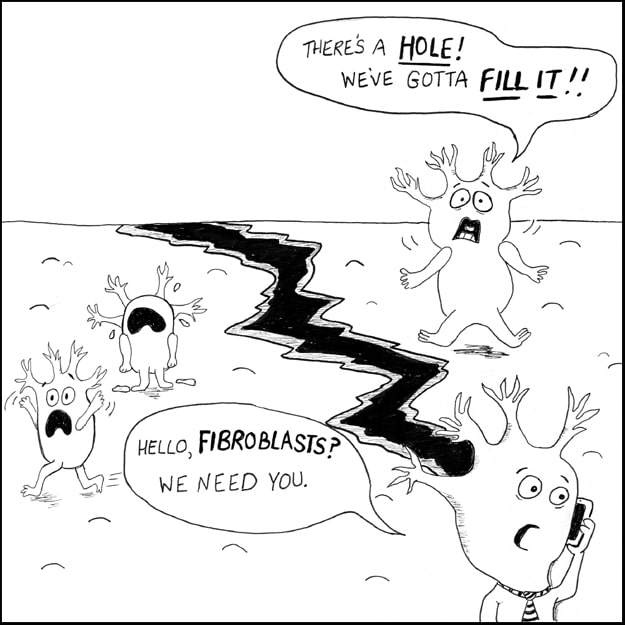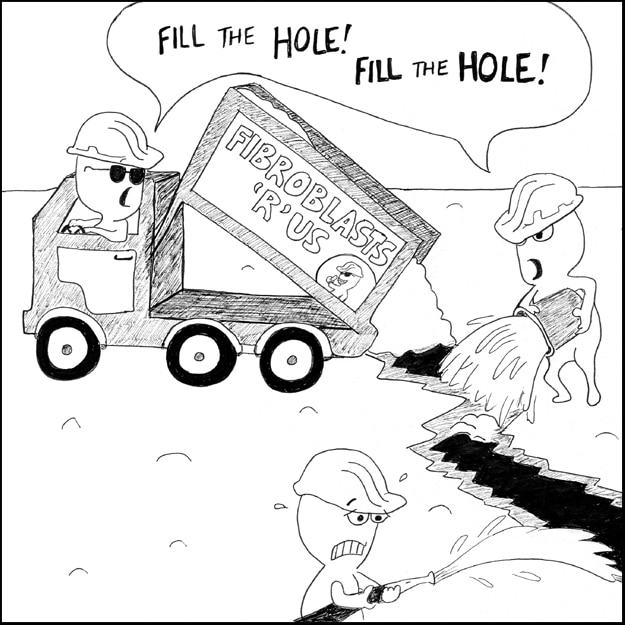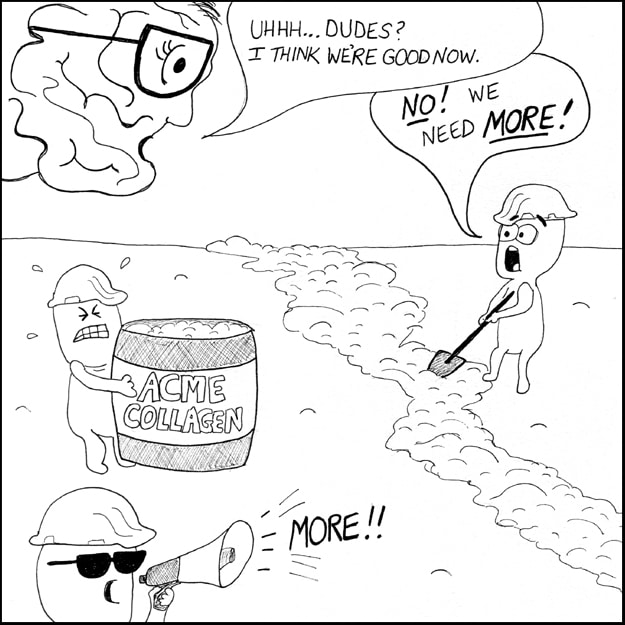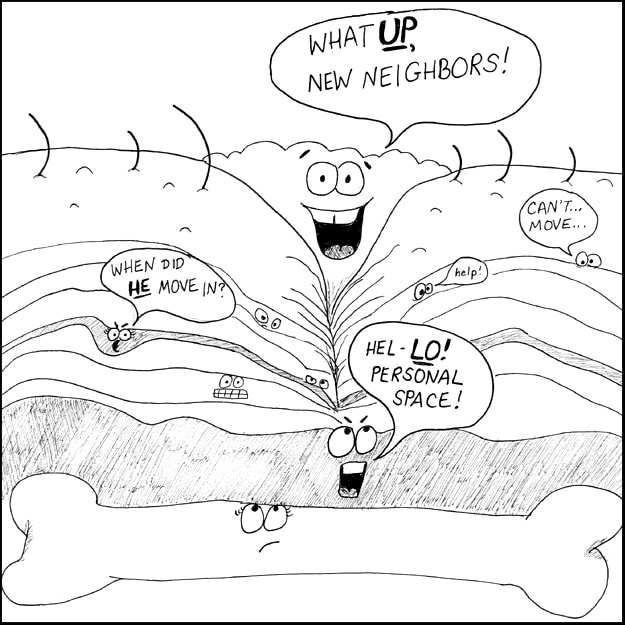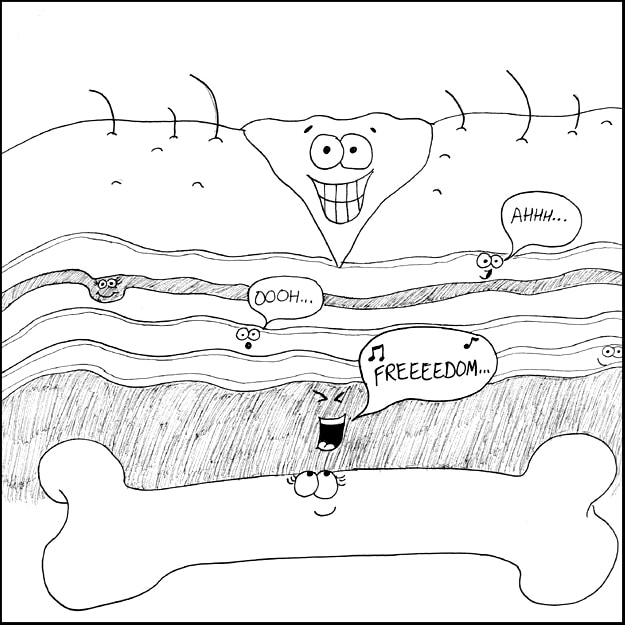I used to draw cartoons as a kid, through high school and college, and sometimes during my corporate career. I realized during massage therapy school that I retained information about the human body best when instructors characterized different parts and made it funny.
I talk about human physiology like this with my clients in my practice as a way to educate them about their bodies, and I started drawing “Under Your Skin” as a way to illustrate what I see in my head and to help answer some Frequently Asked Questions.
So, you’ve just had surgery. Here’s what’s going on under your skin…
When there’s trauma to the skin and underlying fascial layers, nerve cells located in that area go on high alert and stimulate nearby cells called fibroblasts.
These fibroblasts are like a construction crew, and they quickly start laying down collagen that forms a dense, fibrous matrix to close up the wound as fast as possible.
Collagen production usually shuts down once the brain senses that enough strength has been achieved. But, well, the fibroblasts’ work can sometimes be a little overzealous and sloppy, and when too much collagen gets laid down, and/or it’s deposited in a haphazard formation, it can form pathological scars. You might hear terms like “hypertrophic” or “keloid.” These scars can be raised, dense, puckered, dark in pigment, or some combination of these things.
Scar tissue, especially when it’s pathologically formed, can cause a “snag in the pantyhose” effect, creating tension on the surrounding tissue, pulling it inward, and impeding healthy lymphatic flow. It can also “bind down” to other structures and tissues below, like deeper connective tissue and bone. If you think about your layers of skin and fascia like layers of phyllo dough (yup, the flaky pastry stuff), imagine them all squished, dried out, and stuck together.
When tissue is dried out and bound down, it can affect your range of motion, cause sensations of tightness or tenderness, and can cause post-surgical swelling to hang around longer than it should.
Scar mobilization massage aims to create more tissue pliability, opening up those layers of phyllo dough so that the surrounding extracellular “goo” can get back in, and then the skin and fascial layers can slide against each other better, allowing for further, easier movement.
And this work is meant to be gentle and non-invasive, and works to keep your nervous system calm (because nobody wants your body thinking it’s going through more trauma – it could end up laying down more scar tissue, and those fibroblasts did enough, thankyouverymuch).
Not to mention, scar massage can also help scars look better – flatter, smoother, less puckering, less redness.
And with all that therapeutic effect on your scar tissue, maybe that could mean…
Wave on.

